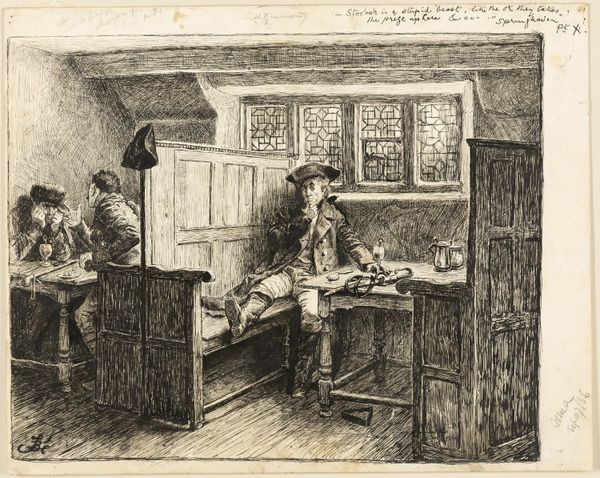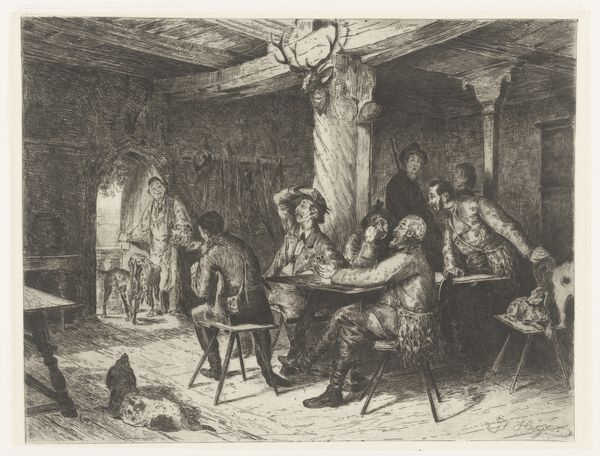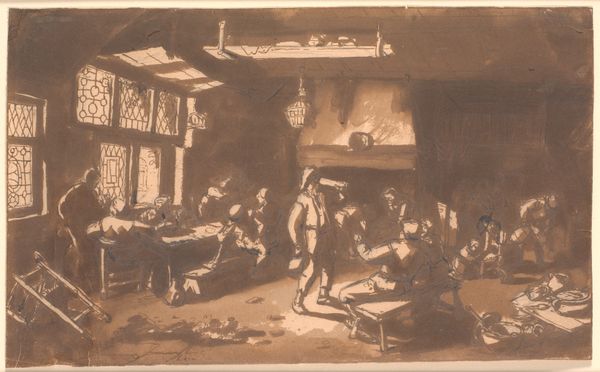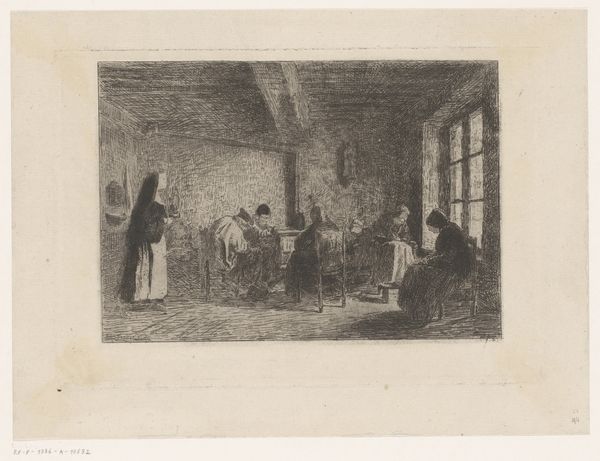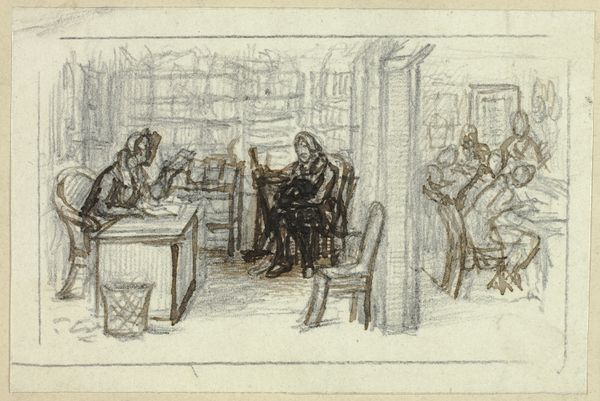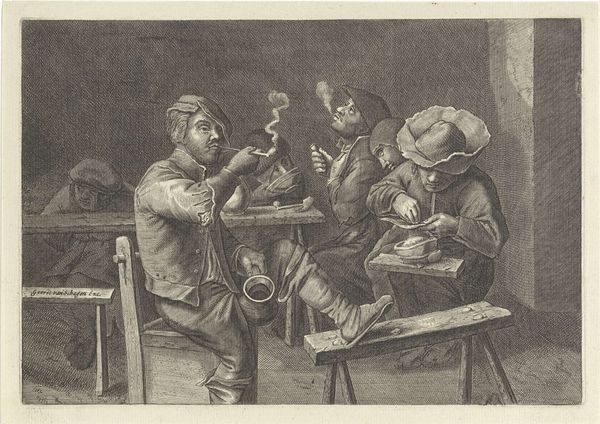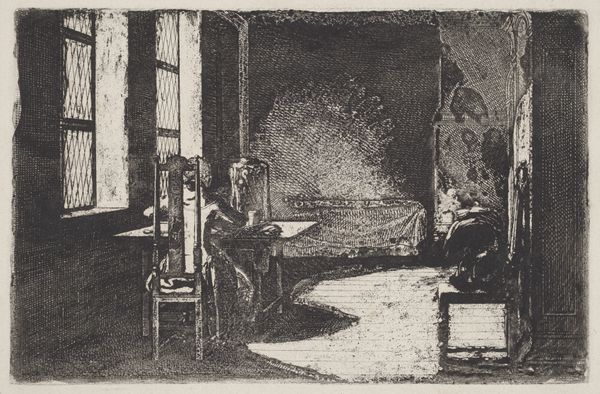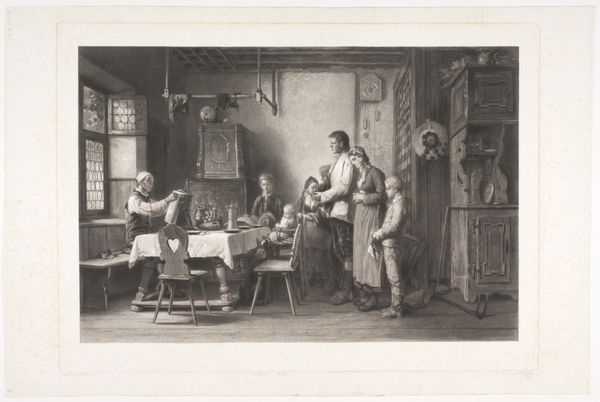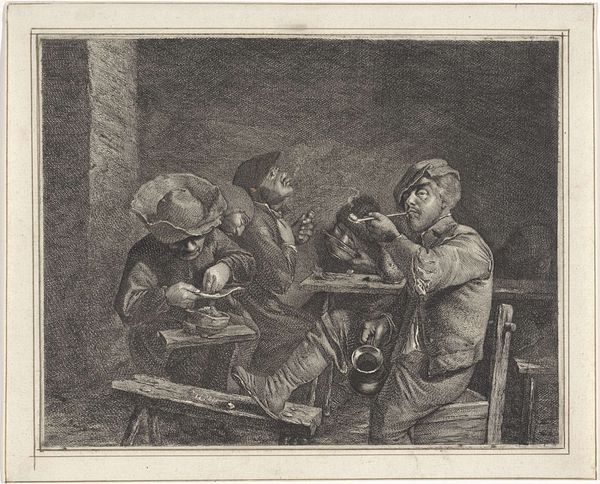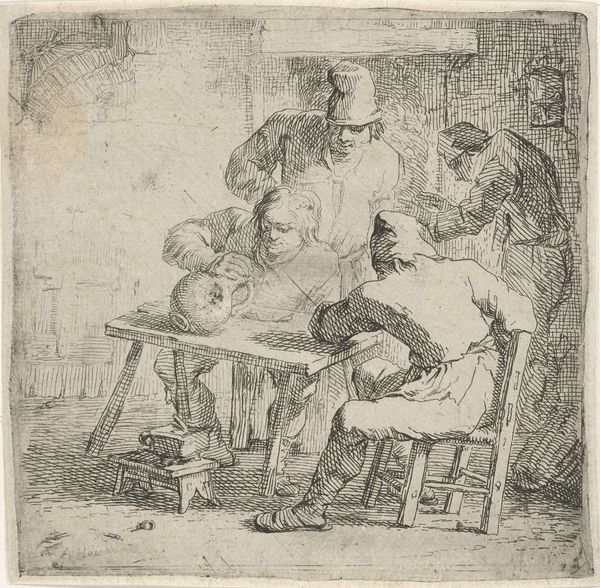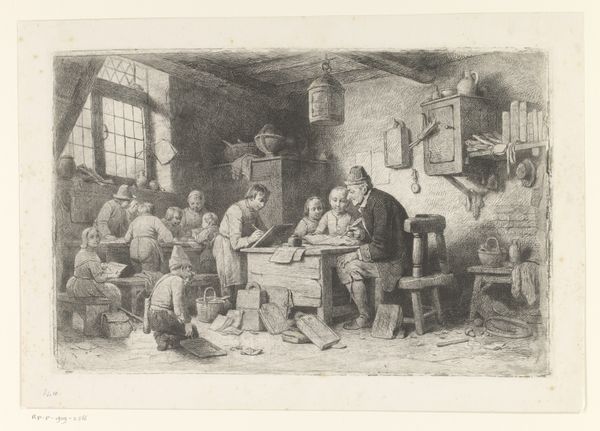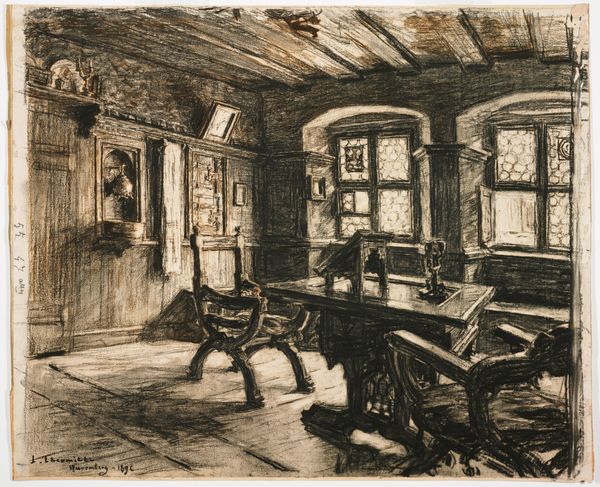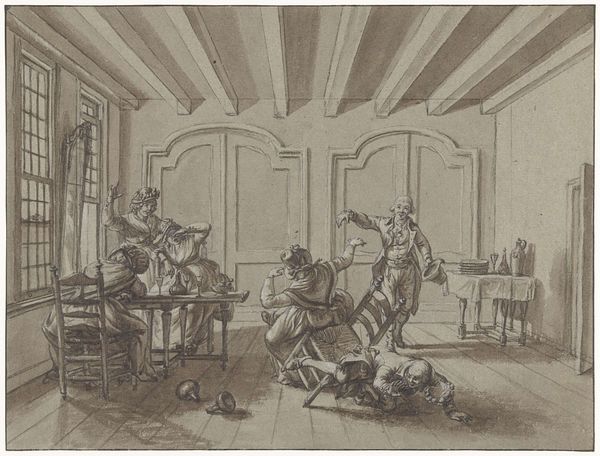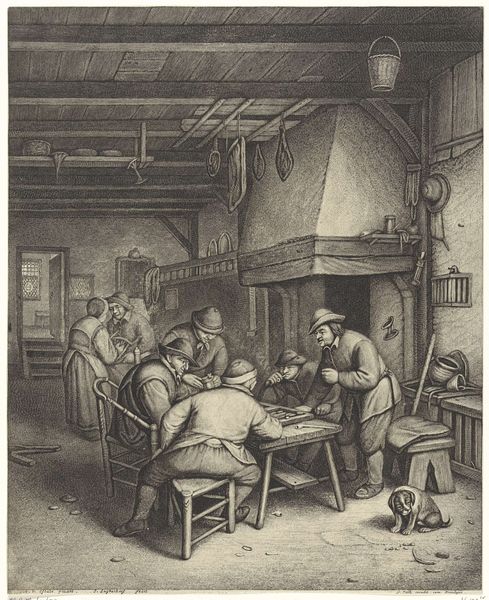
Interiør fra en bondestue med fem personer 1878 - 1881
0:00
0:00
drawing, pencil, charcoal
#
portrait
#
drawing
#
pencil sketch
#
charcoal drawing
#
pencil drawing
#
pencil
#
genre-painting
#
charcoal
#
realism
Dimensions: 236 mm (height) x 315 mm (width) (bladmaal)
Editor: Here we have Poul S. Christiansen's "Interior from a Farmhouse with Five People," created between 1878 and 1881, using pencil and charcoal. There's such a somber, almost haunting quality to this depiction of rural life. What stands out to you about this piece? Curator: The stark realism is immediately compelling, especially when viewed through a lens of social consciousness. Consider the time period. The late 19th century was a period of significant socio-economic upheaval in many parts of Europe. What do you see in this quiet domestic scene, and what narratives might it be subtly revealing about gender roles or the economic realities of rural life in that era? Editor: I see people quietly working, heads bowed, but they seem isolated from each other. Is the artist making a statement about something more than just everyday life? Curator: Precisely. Note how the artist uses light and shadow to create a sense of depth, but also isolation. Consider, too, the materiality of the artwork: the fragility of the charcoal and pencil on paper mirroring the precariousness of these lives. How might contemporary theory, like feminist studies or critical race theory, further inform our understanding of these hidden aspects? Editor: I hadn't considered that. The subdued tones and the somber expressions might speak to a sense of disempowerment or marginalization within that societal context. Curator: Exactly. We can look at this drawing as a social document, prompting us to think about how power dynamics shape lived experiences, then and now. Does thinking about it this way change your initial perspective at all? Editor: Yes, definitely. Seeing it as a glimpse into their reality makes the image more powerful. It prompts reflection on class, gender and labour dynamics in history, something I hadn't considered initially. Curator: And that’s the beauty of art – it encourages us to see the world through different lenses, challenge assumptions, and promote critical dialogues about our shared past and present.
Comments
No comments
Be the first to comment and join the conversation on the ultimate creative platform.
